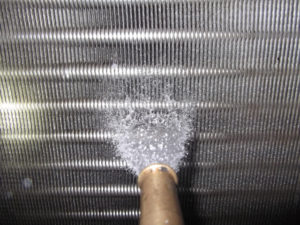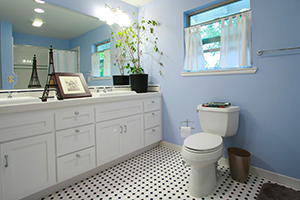
When it comes to air conditioning, maintenance is key. If you don’t maintain your HVAC system regularly, then you run the risk of malfunction. So, in light of that fact, our team of local HVAC professionals has put together this DIY air conditioning maintenance guide. Let’s get started!
Step 1 – Visually Inspect the Entire System
Before you start any maintenance procedures, you will first need to do a quick visual inspection of the entire system. Check the condition of the air handler, your supply and return vents, and the condenser. If you don’t see any obvious signs of damage, then move on to step 2. However, if you do see signs of damage, then contact the HVAC experts at United Plumbing Heating Air & Electric right away.
Step 2 – Check and Change Your Air Conditioner Filters
Air conditioners all have one or more filters. Why? Because unfiltered air is full of dust, dirt, dander, and debris that will all adversely affect your air conditioning system.
Before you change your filters, you will first need to locate them. For traditional air conditioning systems, the filters are usually housed near the air handler. There will usually be a label that tells you where the filter is and what direction you should install it. For ductless mini-split air conditioning systems, the filter is always located in the air handler half of the system.
Once you have found your filter, remove it and check its dimensions. Then, head to your local hardware store and pick up a filter with the exact same physical dimensions. After that, simply install it in the same direction as the one you removed and you’ll be good-to-go!
Also, please remember that air conditioning filters should be changed every three to six months depending on how often you use your HVAC system.
Step 3 – Check Your Coils
After you have finished changing your filters, it’s time to check the condition of the evaporator and condenser coils. But first, what are air conditioning coils? Well, HVAC coils are copper tubes surrounded by aluminum heat dissipation fins. In cooling cycles, the coils do all the heavy lifting. But enough about what they are. Let’s talk about how to check and clean them.
In traditional air conditioning systems, the evaporator coil lives in the air handler, and the condenser coil lives in the condenser unit (usually found outside of your home or business). To check the coils, just look at them. If your coils are dirty, then turn off the system and you can clean them with running water. And, if they’re REALLY dirty, then you can pick up coil cleaning solution at your local hardware or home improvement store. If either coil is clearly damaged, then contact our team of AC repair in Encinitas experts right away.
For ductless mini-split HVAC systems, the evaporator coil is located inside at the air handler, and the condenser coil is outside and housed in the condenser unit. To check these coils, again just use your eyes. If there is any visible damage, then call our team of AC repair experts. If the coils are dirty, then turn off the system and usee running water to clean them up. And, just like with traditional systems, if your coils are exceptionally dirty then you can use a coil cleaning solution from your local hardware or home improvement store.
Step 4 – Cycle the System and Listen/Look for any Obvious Malfunction
Once you have finished changing your air filters and checking your coils, it’s time to cycle the system. To cycle the system, you can do one of two things. One option is to head over to your thermostat and to turn the system on manually. The other option is to use wire jumpers to connect power to the various components inside the system. However, our experts recommend that you use your thermostat to cycle your system.
While your system cycles, listen for any strange noises and look out for any obvious problems. If the system turns on and starts to cool your space, then it is probably good to go. However, if you notice any issues, or if you just don’t feel confident in your system during a cycle, then contact our team of air conditioning repair experts.
That’s It, You’re Done!
After you have completed steps 1 through 4, you’re done! Just please do remember that you should perform these maintenance procedures about every 3 to 6 months. And, if you have any issues performing these maintenance procedures yourself, then you can always contact the air conditioning technicians or electricians in San Diego here at United Plumbing Heating Air & Electric! Good luck and happy cooling!





